Gurazeni – 06
Watanabe Ayumu’s other baseball anime checks in with another solid insider episode this week, this time touching on the rather interesting topic of socializing between members of opposing teams. And off-field behavior generally, which is certainly a rich topic in a sport that’s been blessed with some of the strangest and most colorful characters around.
Not for the first time, it strikes me that Bonda-san’s obsession with salaries (this time around, “multipliers”) is not entirely healthy. Most innocently it’s a sort of superstition, and ballplayers are justifiably legendary for being superstitious creatures. But he lets it get into his head too much – if he was the sort of fellow that would use stuff like that to get angry at the opponent, it might be a good tactic for psyching himself up. But that’s not Bonda.
Baseball used to have a lot of notorious partiers, too, but that has indeed changed a lot with the current generation. “Carnivores” have become “herbivores”, and non-smoking ones too, though neither is really Bonda’s preference. After watching a quartet from the opposing team inhale a grotesque amount of meat (no vegetables), beer and cigarettes, Bonda and Sibuya-san end up at a club in Ginza (these are not prostitutes, just for the record) where they run into a visiting player, Sekiya-san, who’s the only one in NPB that’s the most dreaded multiplier of all – he makes 180 million, 10X Bonda’s salary. He’s a regular – “drops at least a million” on every visit – and offers to pay for Bonda and Sibuya’s tab (they refuse). And if all that weren’t enough, Bonda sees Sekiya just arriving home while he’s out running at 8:00 the next morning.
That it will all come down to the lefty-batting Sekiya vs. Bonda in a critical late-game situation is a given – even Bonda acknowledges it. This is the most fascinating, scientific and exciting at-bat of Gurazeni so far – and Bonda wins the battle with a “front door” slider on the sixth pitch (Sekiya never swings the bat). But equally interesting is the not so-obvious importance of refusing to accept Sekiya’s hospitality at the hostess club – that debt would have been inside Bonda’s head when he was throwing those inside pitches. Pro athletes have to worry about stuff like that, because sports is about the mind as much as the body. It’s great to see Bonda succeed in the clutch – and hopefully start to think of himself as something more than an 18 million Yen bit player.
Gegege no Kitarou (2018) – 07
Make no mistake about this: in a different season or maybe even on a different day, I’d probably blog both these series on their own rather than in digest form. The 2018 version of Gegege no Kitarou has impressed the hell out of me (pun intended). Not only is it excelling at telling stories – and lots of different types of stories at that – but there’s some marvelous animation and direction happening too. I’ve never bought into the myth that Toei doesn’t do great animation anyway, but this edition of Gegege no Kitarou flies in the face of that lie.
For all that it gets little discussion in English and laughably low aggregator scores (though it does decently on Anime Planet, a site whose audience seems to have more varied tastes than MAL), Gegege no Kitarou remains an institution in Japan. This version gets excellent TV ratings, but what’s really interesting is that it airs in a flat-out kids slot (though Hunter X Hunter 2011 did too before the “Chimera Ant” arc, of course) – 9:00 on Sunday mornings. As this week’s incredibly morbid and graphic episode shows, this is a series that’s never been afraid to broach dark subjects – and bullying and suicide certainly count.
The subject of Karma is obviously central to Buddhism, and as such central to the mythology that underpins this franchise. The story of the company president who berates and bullies his staff is not at all far-fetched, and you know as soon as you see the “special” train to Tama Cemetery that things are going to take a dark turn. Kitarou’s role as the “conductor” though (Neko Musume is on-board, too) is a fascinating one (he’s also hanging around friend-style with Nezumi-Otoko again). This train ride to Hell is a masterpiece – you really experience what this bastard is experiencing, and there’s some fantastic cinematography here as well (I love what’s happening outside the train especially). In its own way this is almost as impressive as the Ghibli-esque Episode 4.
This kind of story is all too real in modern Japan – companies and presidents like this do exist, and workers are driven to suicide by them. But the real kicker of the episode is the ending, which beautifully ties back in with the intro – and the girl who’s called in Kitarou about the photo she took of a man being pushed to his death by ghostly hands. Kitarou’s message to her is utterly chilling – what goes around does indeed come around. And if hell companies are part of the Japanese cultural fabric, so is school bullying – often ending in the same tragic way. As Kitarou says, this is way more scary than youkai. There are no punches pulled here, timeslot be damned – like the 0:42 to Tama Cemetery, this is a dark ride.







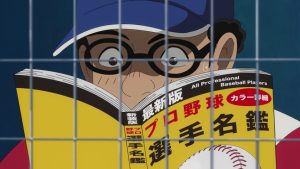

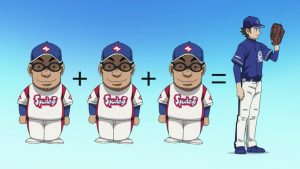
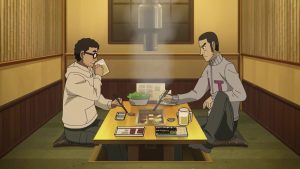


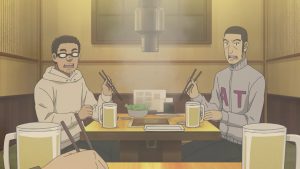
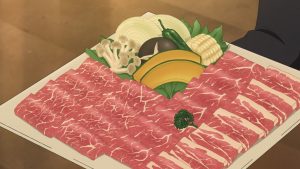

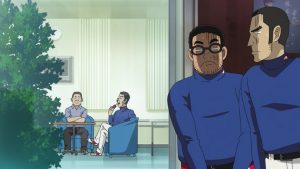





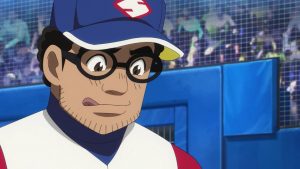

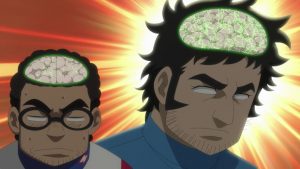
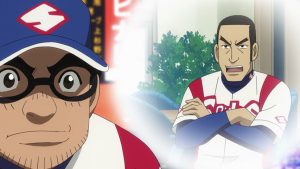

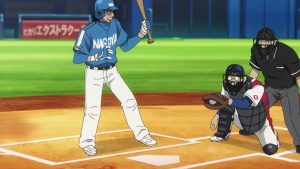

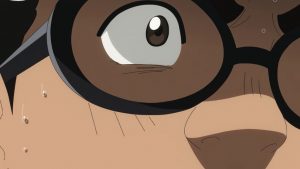
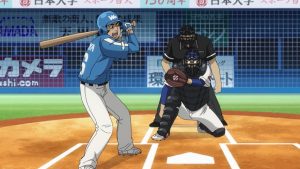


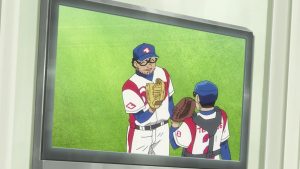

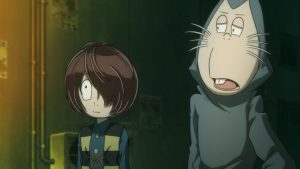



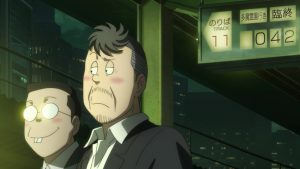
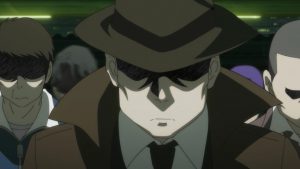
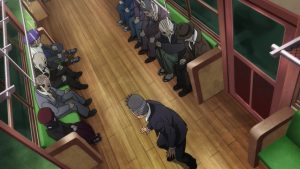
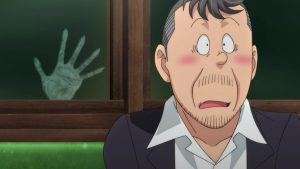
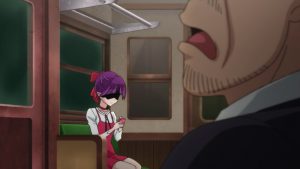
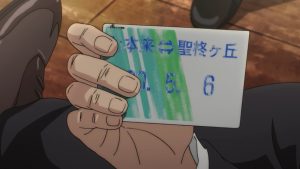




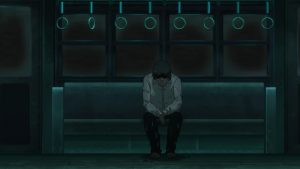




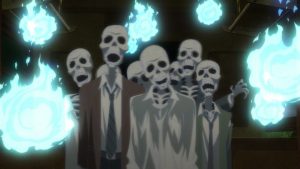

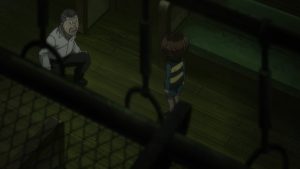
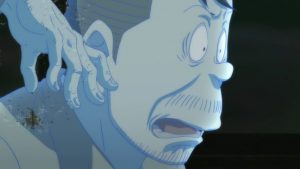
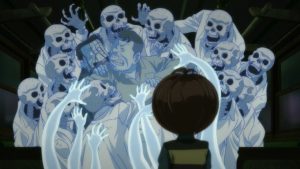
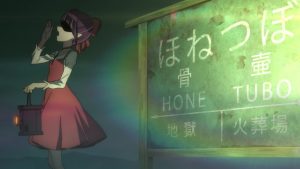









slazer
May 13, 2018 at 5:10 amI’m really fascinated by the plotting of each episode of Gurazeni, because while the series on the whole plays like some sort of baseball slice-of-life, I learn a lot more from it on a weekly basis than say something like Barakamon or K-On!. It really seems to get why baseball is entertaining on the intellectual front in a way that has always bothered me sitting in the stands at a baseball field – while for a normal spectator Bonda’s strikeout looks like seven pitches, the way the show portrayed it was straight riveting, and it was marvelous. Any suggestions for how to bring this sort of intrigue and understanding into day-to-day following of the real sport, Enzo?
Guardian Enzo
May 13, 2018 at 5:19 amI would consider reading “Moneyball”, about the exec Billy Beane who kind of took the teachings of Bill James and put them into practice on a practical level. Sabermetrics has dominated baseball administration ever since.
leongsh
May 13, 2018 at 6:06 amGurazeni caters for the keen baseball fan in a humorous and yet rings-true way. Sad that so few are watching it.
A word about Gegege no Kitarou. This could be the best adaptation of the title so far. You could call this good and mostly kid-friendly horror. Yes, this episode exceeded the boundary but it is not grisly nor guro.
sonicsenryaku
May 13, 2018 at 7:29 amI know i’ve said this before but man do i dig the cold openings of each GnK episode. All the episodes so far have been structured to seamlessly tie back into these openings, making a part of the fun of watching each episode the act of trying figure out at what exact moment each mini-horror film recrudesces back into its respective episode. I gotta say, Miyuki Sawashiro is totally nailing this version of Kitaro. The boy’s personality has always fluctuating with each iteration of Kitaro but this one is capturing the personality of his original counterpart, that is him being melancholic and soft-spoken yet commanding and somewhat sinister when he needs to be. Throughout this episode, I initially thought Kitaro was pulling an elaborate and morbid prank on the company president, perhaps revealing a more pugnacious and devious side of Kitaro that calls back to the Hakaba series. It wasn’t long until i realized that the president was just dead his soul was being ferried to hell. Makes you wonder if Kitaro does this often as a part-time whenever he has to deal with vengeful human spirits. It was nice to see Neko Musume again (still hands-down the best design rendition we’ve had of her yet); seems like felt like lending Kitaro a helping hand this time around; which come to think of it, has kind of always been how she usually gets involved in Kitaro’s yokai busting. I especially loved her dejected and unenthusiastic stop calls interspersed throughout the episode.
It’s looking like next week’s episode is a sort of retelling of the second episode of Kitaro 1985 i.e. the formal introduction of Yumeko. If you needed any more proof that Mana is the 2018 incarnation of Yumeko, this is it (although Mana’s relationship with Kitaro isn’t as flirty as Yumeko’s was in that series). Oooooo, you know what would be a cool twist; if this grandma Yuta speaks of happens to be Yumeko; that would be nice cheeky nod to the third series, but ultimately give rise to some questions about continuity.
Collectr
May 13, 2018 at 2:07 pmThis week’s Kitarou was a master-class is going dark, down to the last interchange. The social media-obsessed high school girl who witnessed the company president’s demise has no reason to fear that the yokai responsible will attack her: “Unless you can think of a reason why they might.” Much scarier than any yokai, indeed, not in the least because of how Sawashiro Miyuki nails the delivery of that line.
Rita
May 16, 2018 at 9:40 amThis review was what kind of tipped me over the curiosity meter enough to try and fit GnK into my schedule (save me) but I don’t regret it at all. The show is thorough entertaining but also surprisingly nuanced for a kid’s show. And honestly a lot darker than most mainstream anime, and I mean that in the truly, psychologically dark. Not the guro or gratuitous violence type of shock value type ‘dark’.
I’ve always been of the mind that series that can put you in that same mindspace without resorting to physical shock are always a lot stronger for it
Guardian Enzo
May 16, 2018 at 2:32 pmAgreed.